Metal Injection Molding (MIM) and Powder Metallurgy (PM) are two prominent manufacturing techniques used to fabricate complex metallic components. This article presents an extensive comparative study of MIM and PM, focusing on their mechanical properties, microstructure, cost-effectiveness, and environmental impact. The study integrates experimental data, numerical simulations, and statistical analyses to provide a comprehensive understanding of the performance of each technique. By analyzing a wide range of parameters, this research aims to assist engineers and researchers in making informed decisions regarding the selection of the most suitable manufacturing process for specific applications.

Where MIM and PM Differs
Metal Injection Molding (MIM) and Powder Metallurgy (PM) have gained significant importance in modern manufacturing, particularly for components requiring high precision and complex geometries.
MIM combines the benefits of powder metallurgy and plastic injection molding, while PM relies on compaction and sintering processes.
1.Material
Indeed, Metal Injection Molding (MIM) and Powder Metallurgy (PM) are two distinct manufacturing processes, and their materials, as well as their processing steps, differ significantly. Let’s delve into the differences in materials used for MIM and PM:
Metal Injection Molding (MIM):
MIM utilizes a feedstock consisting of fine metal powders mixed with a thermoplastic binder and other additives. The metal powders used in MIM can be composed of various materials, including stainless steel, low-alloy steels, tool steels, copper-based alloys, tungsten alloys, and other materials. The particle size and composition of the metal powders play a crucial role in determining the final properties of the MIM components.
The thermoplastic binders used in MIM are typically a mixture of polymers, such as polyethylene, polypropylene, or wax, which facilitate the injection molding process. The binder-to-metal powder ratio in the feedstock affects the final density and mechanical properties of the MIM components.
Powder Metallurgy (PM):
In Powder Metallurgy, metal powders are also used as the primary raw material, but the process differs from MIM. PM involves compacting the metal powders in a die to form a green part, followed by sintering to achieve particle bonding and obtain the final shape and mechanical properties.
The metal powders used in PM can be similar to those used in MIM, including various types of steel, copper, bronze, iron, and other metal alloys. The powder particle size distribution, alloy composition, and particle shape significantly influence the densification and properties of the PM components.
Unlike MIM, PM does not utilize binders in its raw material. Instead, the metal powders are compacted directly to form the green part, which is subsequently subjected to sintering at elevated temperatures. Additional secondary operations, such as hot isostatic pressing (HIP) or infiltrating with other materials, can further enhance the properties of PM components.
Key Differences:
- Feedstock: MIM uses a mixture of metal powders and binders, while PM utilizes metal powders without binders.
- Manufacturing Steps: MIM involves injection molding of the feedstock to create “green” parts, followed by debinding and sintering. PM involves compaction of metal powders in a die, followed by sintering.
- Complexity: MIM is suitable for producing complex-shaped components with high dimensional accuracy, while PM is more commonly used for simpler shapes.
- Mechanical Properties: MIM often results in components with superior mechanical properties due to its fine-grained microstructure, while PM can achieve good mechanical properties but may require additional post-processing to attain similar levels of performance.
- Cost: MIM may have slightly higher material costs due to the use of binders, but it offers cost savings in post-processing. PM generally has lower material costs but may require more extensive machining for final component finishing.
Metal Injection Molding and Powder Metallurgy differ in their raw material composition, manufacturing steps, complexity of components produced, and resulting mechanical properties. Both processes offer unique advantages and are suitable for specific applications depending on the desired properties and complexity of the components needed.
2.Design Freedom
Design freedom refers to the extent to which a manufacturing process allows engineers and designers to create complex and intricate shapes without compromising the final product’s performance. Let’s explore the design freedom offered by Metal Injection Molding (MIM) and Powder Metallurgy (PM) processes:
Design Freedom in Metal Injection Molding (MIM):
MIM offers significant design freedom, making it an attractive choice for producing complex-shaped components. The key factors contributing to MIM’s design flexibility include:
- Net Shape Capability: MIM can produce near-net shape components, which means that the final product often requires minimal or no additional machining or finishing. This capability reduces material waste and simplifies the production process.
- Intricate Geometries: MIM is well-suited for fabricating intricate and detailed geometries that may be challenging or impossible to achieve through conventional machining or other manufacturing processes. This includes features such as undercuts, fine threads, thin walls, and complex internal structures.
- Multi-material Components: MIM allows for the incorporation of multiple materials in a single part, enabling the integration of dissimilar materials with specific properties in various regions of the component.
- Miniaturization: MIM can produce small and precise components with high dimensional accuracy, making it suitable for applications in electronics, medical devices, and other industries.
- Complex Alloys: MIM can handle a wide range of metal alloys, including stainless steel, low-alloy steels, tool steels, copper-based alloys, and more, offering versatility in material selection.
Design Freedom in Powder Metallurgy (PM):
PM also offers certain design freedom, particularly for components with moderate complexity. The design flexibility in PM is influenced by the following factors:
- Near Net Shape Capability: Similar to MIM, PM can achieve near-net shape components, reducing the need for extensive machining and material waste.
- Simple to Moderate Geometries: PM is well-suited for components with simple to moderate complexity, such as gears, bushings, bearings, and structural parts. It may not be as suitable for highly intricate geometries compared to MIM.
- Material Versatility: PM can work with a wide range of metal powders, offering material flexibility for various applications.
- Low-Cost Tooling: The simplicity of PM tooling allows for cost-effective production, making it suitable for large-scale manufacturing.
Comparison of Design Freedom:
While both MIM and PM offer design freedom, MIM holds a distinct advantage in producing highly intricate and complex-shaped components compared to PM. MIM’s capability to create near-net shape components with complex features, tight tolerances, and fine details makes it a preferred choice for applications where design intricacy and precision are paramount.
| Design Freedom Parameter | Powder Metallurgy (PM) | Metal Injection Molding (MIM) |
|---|---|---|
| Powdered Particle Size | 50-100pm | 2-15pm |
| Relative Density | 92% (Max) | >95-99% |
| Wall Thickness | 2-20mm | 0.30 -10mm |
| Medium Component Complexity | Medium | High |
| Weight | 1-1,000g | 0.01-200g |
| Tolerance | 0.1-2.0% | 0.3-0.5% |
On the other hand, PM is better suited for simpler geometries and components requiring moderate precision. PM is particularly advantageous for applications involving mass production, where its low-cost tooling and material efficiency offer economic benefits.
MIM provides superior design freedom, enabling the production of highly complex and intricate components, while PM is better suited for simpler geometries and large-scale production runs. The choice between MIM and PM depends on the specific design requirements, complexity of the component, material selection, and cost considerations. Both processes offer valuable manufacturing options for a wide range of industrial applications.
Physical Properties
Metal Injection Molding (MIM) and Powder Metallurgy (PM) are two different manufacturing processes, and as a result, their physical properties can vary. Below is a comparison chart table of the physical properties of components produced through Metal Injection Molding (MIM) and Powder Metallurgy (PM) processes:
| Physical Properties | Metal Injection Molding (MIM) | Powder Metallurgy (PM) |
|---|---|---|
| Density | High | Variable (Depends on Porosity) |
| Tensile Strength | High | Moderate to High |
| Hardness | High | Variable (Depends on Material) |
| Ductility | Good | Good |
| Impact Strength | Good | Moderate |
| Surface Finish | Smooth and Uniform | Variable (May Require Post-Processing) |
| Corrosion Resistance | Excellent (Stainless Steel-Based) | Good (Depends on Material) |
| Porosity | Low to None | Variable (Controlled for Specific Applications) |
Physical Properties of Metal Injection Molding (MIM)
- Density: MIM components typically have high density due to the ability to achieve close to full density during sintering. This results in components with excellent mechanical properties and improved strength.
- Tensile Strength: MIM parts exhibit high tensile strength, making them suitable for applications where mechanical load-bearing capabilities are essential.
- Hardness: MIM components possess high hardness due to the fine-grained microstructure obtained during sintering. The hardness can be tailored by adjusting the sintering conditions and alloy composition.
- Ductility: MIM parts often exhibit good ductility, providing them with the ability to deform without fracturing under tensile stress. This property is crucial in applications requiring resilience and toughness.
- Impact Strength: MIM components can demonstrate good impact strength, making them suitable for applications subjected to sudden or repetitive loading.
- Surface Finish: MIM parts generally have smooth and uniform surfaces, reducing the need for extensive post-processing and finishing.
- Corrosion Resistance: The corrosion resistance of MIM components depends on the chosen metal alloy. Stainless steel-based MIM parts exhibit excellent corrosion resistance.
Physical Properties of Powder Metallurgy (PM)
- Density: PM components can vary in density depending on the compaction and sintering conditions. Porous PM parts with lower density can be intentionally produced for specific applications.
- Tensile Strength: PM parts possess good tensile strength, though it can be lower than MIM components due to the presence of porosity.
- Hardness: The hardness of PM components depends on the alloy composition, sintering conditions, and degree of porosity. Fully dense PM parts can achieve high hardness values.
- Ductility: PM components generally exhibit good ductility, allowing for some deformation before fracture.
- Impact Strength: PM parts can have satisfactory impact strength, although the presence of pores may affect this property.
- Surface Finish: PM components may have a rougher surface finish compared to MIM parts, necessitating additional machining or surface treatments in some cases.
- Corrosion Resistance: Similar to MIM, the corrosion resistance of PM components is influenced by the choice of alloy, with stainless steel-based PM parts providing excellent corrosion resistance.
The physical properties of both MIM and PM components can be optimized through careful process control, material selection, and post-processing treatments. Additionally, the porosity in PM components can be tailored to achieve specific properties or to serve as self-lubricating characteristics in certain applications. The choice between MIM and PM should consider the required physical properties, complexity of the component, and cost considerations for the specific application.
Where Does MIM and PM Fit?
Metal Injection Molding (MIM) and Powder Metallurgy (PM) are versatile manufacturing processes that find application in various industries and product types. Let’s explore where MIM and PM fit and their respective strengths:
Metal Injection Molding (MIM):
- Complex and Intricate Components: MIM excels in producing complex and intricate components with high dimensional accuracy. It is ideal for manufacturing small parts with intricate features, such as medical devices, electronics, and automotive components.
- High Mechanical Properties: MIM components exhibit superior mechanical properties, including high tensile strength, hardness, and ductility. This makes MIM suitable for applications where mechanical performance is critical.
- Mass Customization: MIM allows for cost-effective mass customization, making it suitable for industries where a wide range of component variations is required.
- Miniaturization: MIM is well-suited for creating miniaturized components used in applications such as microelectronics, microfluidics, and aerospace.
- Aerospace and Defense: MIM is used in the aerospace and defense industries for manufacturing complex and lightweight components with high precision.
Powder Metallurgy (PM):
- Simple to Moderate Complexity Components: PM is well-suited for producing simple to moderately complex components with various shapes, such as gears, bearings, bushings, and structural parts.
- Mass Production: PM is an excellent choice for mass production due to its cost-effectiveness, particularly for high-volume manufacturing of standardized parts.
- Porous Components: PM can be tailored to produce porous components with controlled porosity, making it suitable for applications requiring self-lubrication or filtration.
- Automotive Industry: PM is widely used in the automotive industry for manufacturing engine components, transmission parts, and other structural components.
- Sinter-Hardening Applications: PM is often chosen for sinter-hardening applications, where the component’s mechanical properties improve during the sintering process.
- Ferrous and Non-Ferrous Materials: PM is versatile in working with both ferrous and non-ferrous materials, offering a wide range of material options for various applications.
Metal Injection Molding (MIM) is best suited for producing complex, intricate, and high-precision components, while Powder Metallurgy (PM) is more suitable for mass production of simple to moderately complex components. MIM finds applications in industries such as medical, electronics, aerospace, and defense, while PM is commonly used in the automotive industry and for manufacturing standardized parts. The choice between MIM and PM depends on factors such as design complexity, production volume, material selection, and cost considerations. Both processes offer valuable manufacturing options and contribute to the advancement of various industrial sectors.
Choosing Between Conventional PM and MIM
Choosing between conventional Powder Metallurgy (PM) and Metal Injection Molding (MIM) depends on various factors and considerations. Both processes have their unique strengths and limitations, and the decision should be based on the specific requirements of the application. Let’s explore some key factors to consider when deciding between conventional PM and MIM:
Complexity of Components:
- If the components to be manufactured are simple with minimal complexity, conventional PM might be more suitable due to its cost-effectiveness and simplicity in processing.
- If the components are intricate, with complex geometries, undercuts, or fine details, MIM would be a better choice. MIM’s capability to produce near-net shape complex parts with high precision and dimensional accuracy makes it ideal for such applications.
Mechanical Properties:
- If the application requires components with high mechanical strength and hardness, MIM is likely the preferred option. MIM components generally exhibit better mechanical properties compared to conventional PM due to their higher density and fine-grained microstructure.
- If the mechanical properties needed can be achieved with the porosity present in conventional PM parts, then it can be a cost-effective choice.
Production Volume:
- For high-volume production runs, conventional PM is more suitable. It offers faster cycle times, simpler tooling, and lower material costs, making it cost-effective for large quantities of standardized parts.
- For lower to medium production volumes or when the flexibility to produce small batches with variations is required, MIM can be a viable option.
Material Selection:
- Both processes offer versatility in material selection, including ferrous and non-ferrous alloys. However, MIM might have some limitations in handling extremely coarse or highly reactive powders.
- If the specific application requires a wide range of materials and alloys, both processes can be evaluated based on the desired material properties and compatibility.
Surface Finish and Tolerance:
- MIM generally provides better surface finish and tighter tolerances due to its near-net shape capability, reducing the need for secondary operations.
- If the application requires higher precision and smoother surfaces, MIM would be a suitable choice.
Cost Considerations:
- Conventional PM is often more cost-effective for large production volumes due to its simpler and faster processing, lower tooling costs, and material efficiency.
- MIM may have higher upfront tooling and material costs but can lead to cost savings in complex component designs, reduced waste, and potential consolidation of multiple parts into a single MIM component.
The choice between conventional Powder Metallurgy (PM) and Metal Injection Molding (MIM) should be based on factors such as component complexity, required mechanical properties, production volume, material selection, surface finish, tolerance, and overall cost considerations. Each process offers distinct advantages, and the optimal choice depends on the specific needs and goals of the application. Careful evaluation and collaboration with experienced manufacturers can help make an informed decision for the best-fit manufacturing process.
Getting the Most Out of Your Parts Manufacturer
You know how important it is to stay on budget — that’s probably what brought you to powder metal in the first place.
This often means passing on the coolest, sexiest processes for something more economical and tried-and-true. (Yes, we’re even looking at you too, 3D printing.) With continued education and development of technology, there’s no reason to think “old-fashioned” powder metallurgy won’t be part of the wave of the future in electric vehicles and many other industries.
-

Carbide Tungsten Valve Seat For Oil And Gas Industry
-

Custom Hexahedron Tungsten Dnd Dice
-
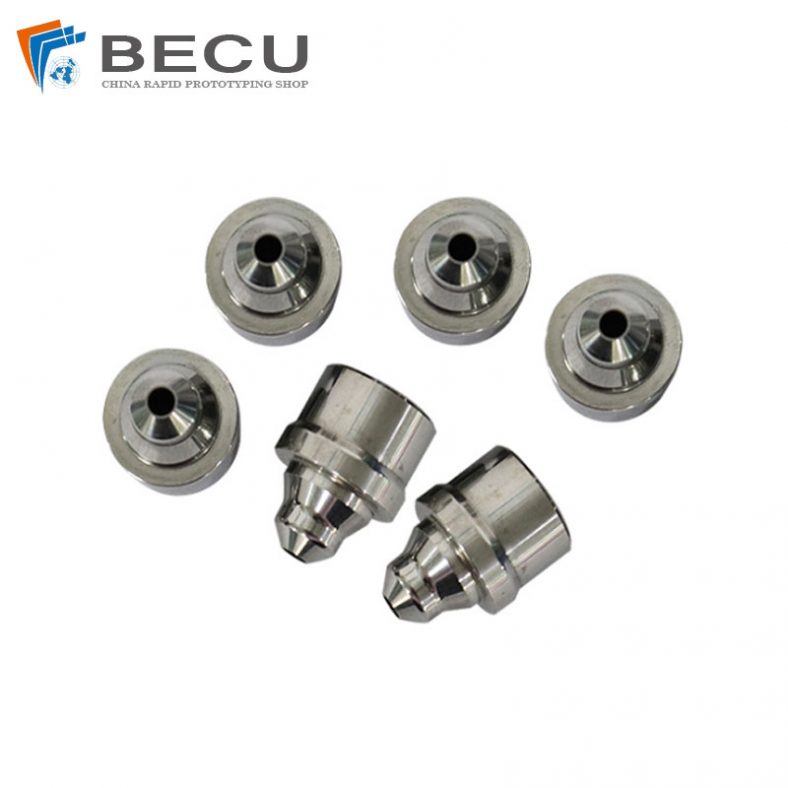
Tungsten Carbide 3D Printer Nozzle
-

Sintering YG6 Tungsten Alloy Non-Slip Thread Screw
-
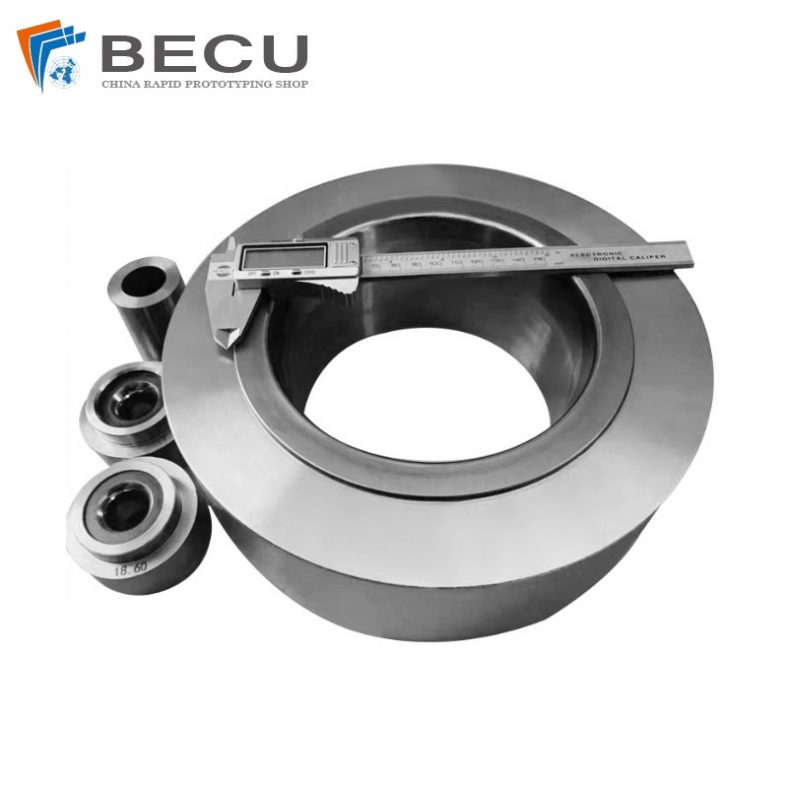
YG15 Tungsten Cobalt Cemented Carbide Parts
-
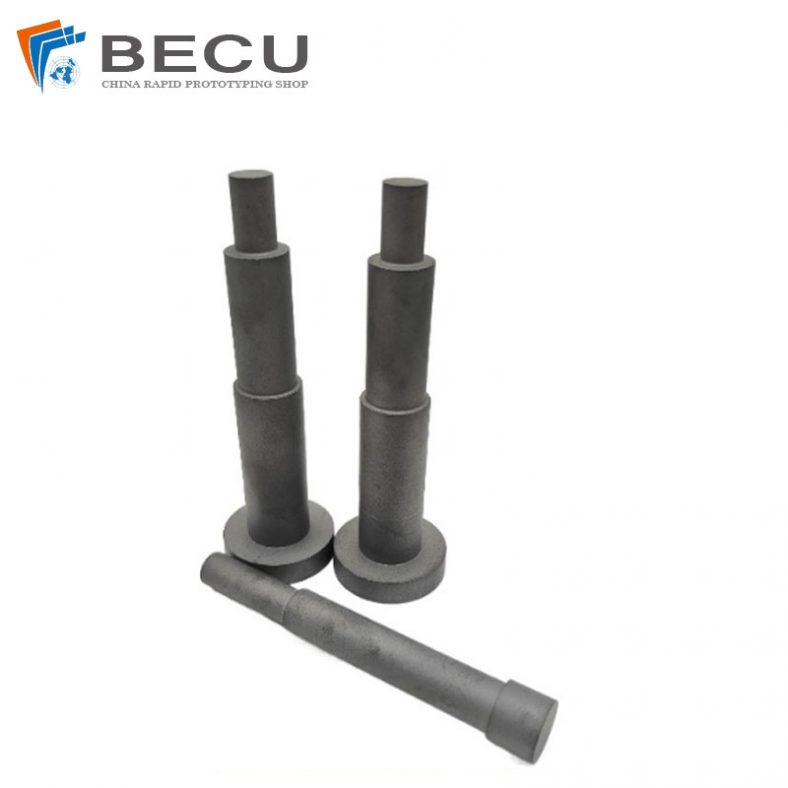
CNC Machining Tungsten Cobalt Carbide Punch
-
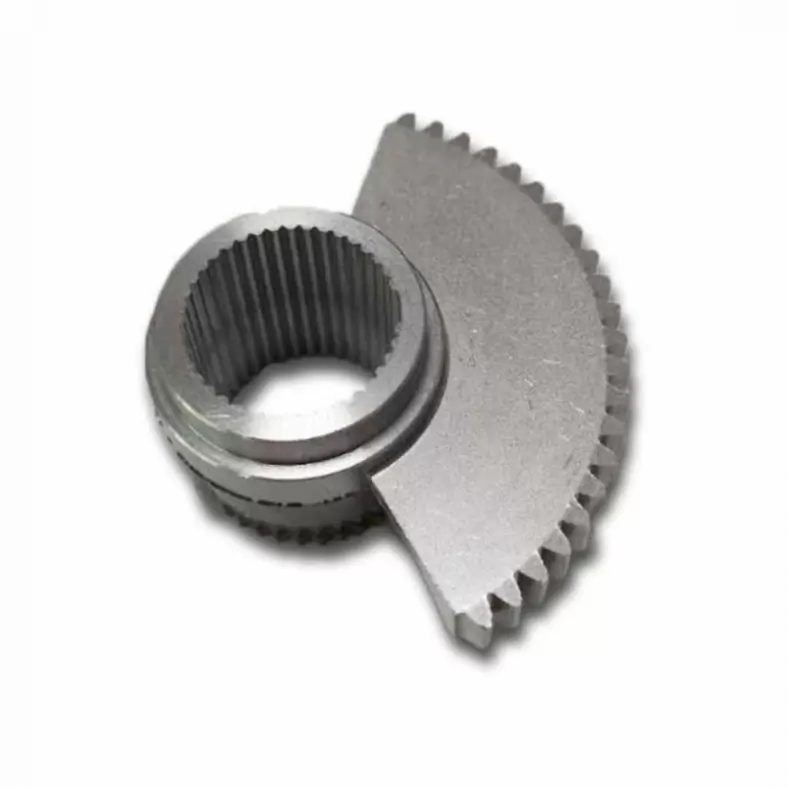
Powder Metallurgy Sector Gear
-
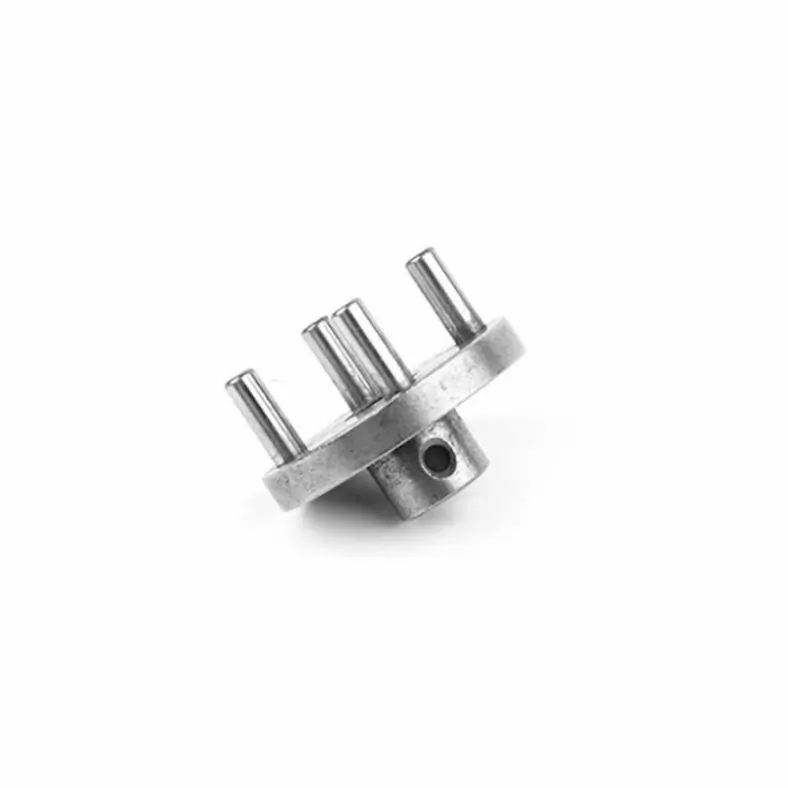
High-Strength Small Powder Metallurgy Gears
As you can see, both MIM and traditional PM have positives and negatives. Ultimately, the right process for your component will depend on a variety of factors, including the amount of design freedom you need and the end use of the component being manufactured. Fortunately Be-Cu is capable of many unique metal forming processes, two of which being MIM and traditional PM.
On every project, we aim to deliver more consistent parts, more efficiently, at lower costs. Our goal is to do away with the expenses associated with secondary processes such as machining, achieving net-shape the first time.
So we build molds that are more efficient for high-volume production and put in as much complexity as needed up front to avoid costly machining and secondary operations.
To keep up with the latest MIM resources, visit our blog.
